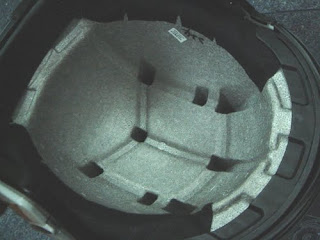
Arai took this technology and incorporated it into a brand new helmet that is a completely new design. RX-7 GP is a completely new, developed to be the ultimate racing helmet.
Just take one look at it and you know it is different. Readily recognizable by the adjustable Air Wing spoiler on the back.
The all-new Arai RX-7 GP is the most extensive race tested helmet ever. This successor to the legendary RX-7 Corsair, has been developed in actual MotoGP and Grand Prix races. Tested at high speeds on the straights of international racetracks. Designed for and used by winning professional riders. The result is the stunning new RX-7 GP with an adjustable Air Wing that significantly reduces buffeting and drag when the riders emerge from a full tuck when braking from high speeds, enhancing concentration. At the same time the Air Wing increases the top speed thanks to the improved aerodynamic properties of the new RX-7 GP.
The RX-7 GP benefits from a wider visor aperture that offers more view through the bends, giving you every time that split-second advantage accelerating out of corners.
The RX-7 GP is the very first motorcycle helmet offering the ‘'Peripherally Belted'' SNC outer shell construction, that surpasses even the incredible strength and stiffness of the Corsair shell.
The ‘'Emergency Release'' cheek pads offer increased personal safety in case of an accident, while the famous SNC net material has become stronger to keep the shell shape intact even under extremely heavy loads and impacts.
A new diffuser, larger visor, wider vision, less buffeting, improved ventilation, the list of improvements and industry-firsts is impressively long.
Personally, I believe that RX7 is one of the best helmets on the market right now for bike racing, but it is more suitable to Asian head, as i feel. I prefer to have a lighter but bigger shell helmet.



























